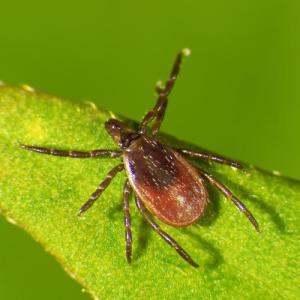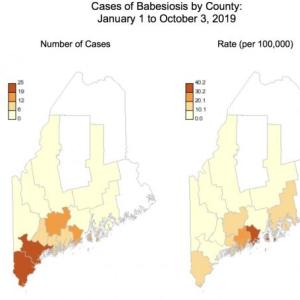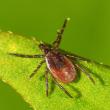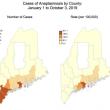Maine records steep increase in tick-borne anaplasmosis, babesiosis
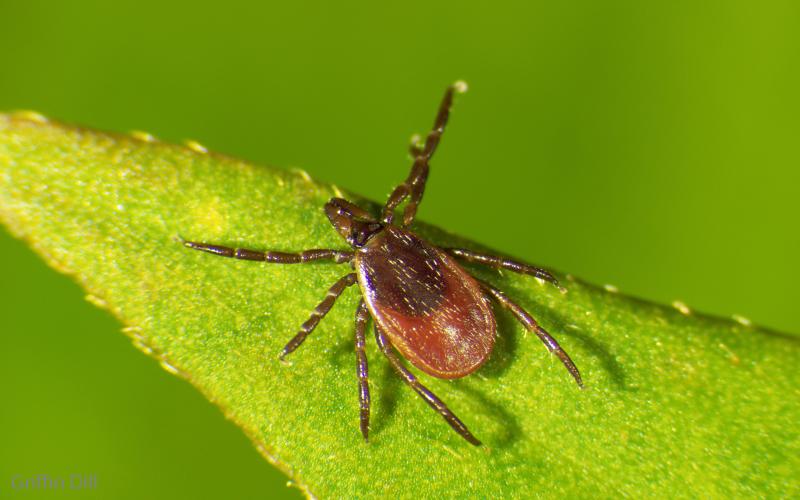 A female deer tick (Photo courtesy Griffin Dill/UMaine Extension)
A female deer tick (Photo courtesy Griffin Dill/UMaine Extension)
 Maine CDC’s Infectious Disease Program obtains tickborne disease case data through notifiable conditions surveillance, based on reports from healthcare providers, laboratories, and other healthcare partners. Maine CDC’s Infectious Disease Program obtains tick-related emergency department visit data through its syndromic surveillance program, which gathers and analyzes daily emergency department visit data from all hospitals in Maine. The Maine Environmental Public Health Tracking Program prepared the data display.
Maine CDC’s Infectious Disease Program obtains tickborne disease case data through notifiable conditions surveillance, based on reports from healthcare providers, laboratories, and other healthcare partners. Maine CDC’s Infectious Disease Program obtains tick-related emergency department visit data through its syndromic surveillance program, which gathers and analyzes daily emergency department visit data from all hospitals in Maine. The Maine Environmental Public Health Tracking Program prepared the data display.
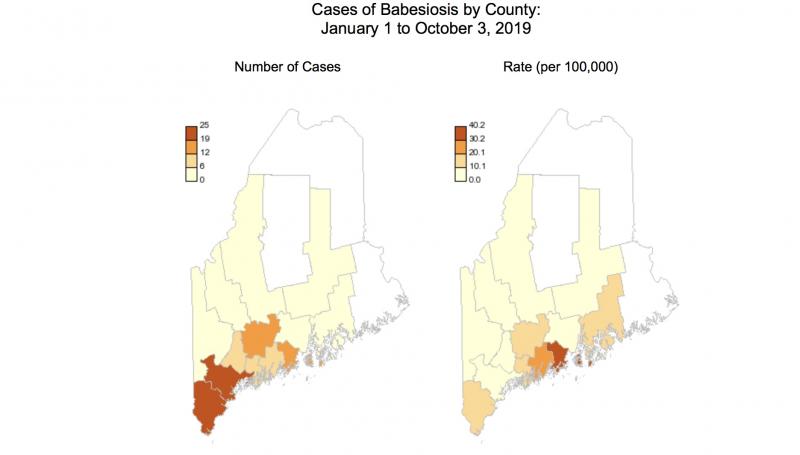
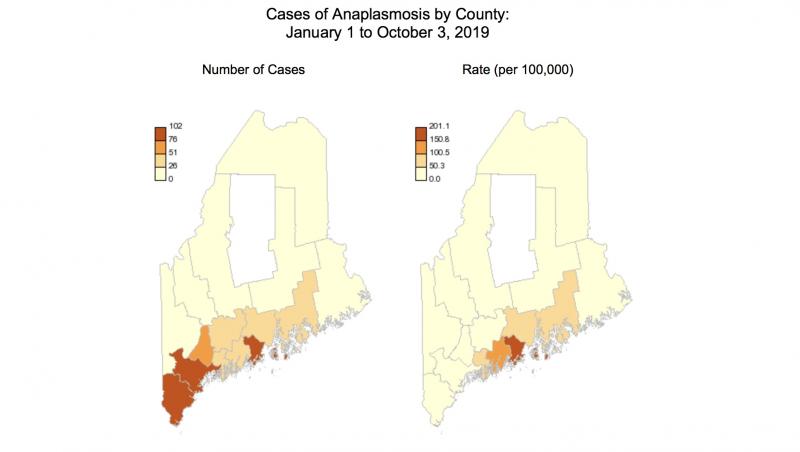
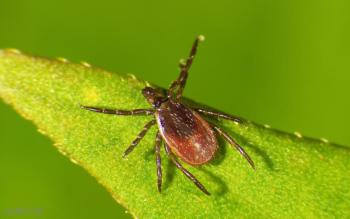 A female deer tick (Photo courtesy Griffin Dill/UMaine Extension)
A female deer tick (Photo courtesy Griffin Dill/UMaine Extension)
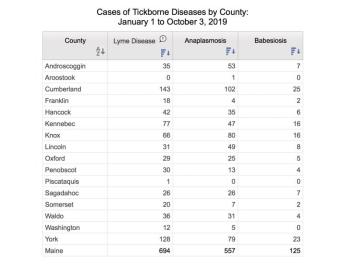 Maine CDC’s Infectious Disease Program obtains tickborne disease case data through notifiable conditions surveillance, based on reports from healthcare providers, laboratories, and other healthcare partners. Maine CDC’s Infectious Disease Program obtains tick-related emergency department visit data through its syndromic surveillance program, which gathers and analyzes daily emergency department visit data from all hospitals in Maine. The Maine Environmental Public Health Tracking Program prepared the data display.
Maine CDC’s Infectious Disease Program obtains tickborne disease case data through notifiable conditions surveillance, based on reports from healthcare providers, laboratories, and other healthcare partners. Maine CDC’s Infectious Disease Program obtains tick-related emergency department visit data through its syndromic surveillance program, which gathers and analyzes daily emergency department visit data from all hospitals in Maine. The Maine Environmental Public Health Tracking Program prepared the data display.

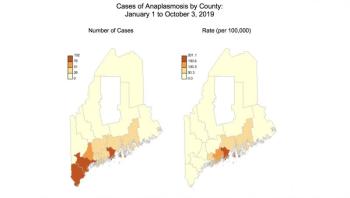
Maine has seen significant increases in reported cases of the tickborne illnesses anaplasmosis and babesiosis in 2019, according to the Maine Center for Disease Control and Prevention. As of October 1, the CDC recorded 556 cases of anaplasmosis and 124 cases of babesiosis. That is an all-time annual high for babesiosis, and Maine is on track to surpass the record high of 663 cases of anaplasmosis set in 2017.
These increases in cases of anaplasmosis and babesiosis come as Maine has recorded 684 cases of Lyme disease, the state's most common tickborne illness, since January 1, 2019.
The process of confirming a Lyme disease diagnosis through lab testing takes longer than for anaplasmosis or babesiosis, and public health officials in Maine expect total Lyme cases to exceed 1,000 when annual reporting for 2019 is complete. The state recorded 1,405 cases of Lyme disease in 2018 and 1,855 in 2017.
Maine CDC urges the state's residents and visitors to continue taking precautions against tickborne diseases during the year's second peak season for tick activity, which takes place from October through November. Learn more at the CDC with its tracking network of tick-borne disease.
"This has been one of the most active tick seasons we've ever seen in Maine - and it's not over," said Maine CDC Director Nirav D. Shah, in a news release. "The risk of tickborne illnesses remains high through November, so we urge everyone to protect themselves from tick bites."
Anaplasmosis is caused by bacteria carried by infected deer ticks.
Symptoms include fever, headache, malaise, and body aches. Anaplasmosis can be a serious illness if not treated promptly and correctly.
Babesiosis is caused by a parasite carried by infected deer ticks. Symptoms include extreme fatigue, aches, fever, chills, sweating, dark urine, and possibly anemia. Babesiosis can also be a serious illness if not treated promptly and correctly.
Lyme disease is caused by bacteria carried by infected deer ticks. The hallmark sign of the disease is a rash referred to as the "bull's-eye" rash. This occurs in a little more than 50 percent of patients in Maine, usually within three to 30 days of a tick bite. Other symptoms include arthritis and heart problems.
These tickborne illnesses cannot be transmitted directly from human to human.
The best way to prevent tickborne disease is to take preventive steps to avoid tick bites. Maine CDC suggests the No Ticks 4 ME approach, which includes:
- Wearing protective clothing. Light-colored clothing makes ticks easier to see and long sleeves and pants reduce exposed skin.
- Using an EPA-approved repellent and always following the label. Clothing and gear can be treated with permethrin for longer protection.
- Using caution in tick-infested areas. Avoid wooded and bushy areas with high grass and stay in the middle of trails whenever possible.
- Performing daily tick checks. Check for ticks immediately after exiting high-risk areas. Bathe or shower (preferably within 2 hours after being outdoors) to wash off and find ticks on your body. Conduct a full-body tick check. Also examine clothing, gear, and pets.
For more information
Event Date
Address
United States

